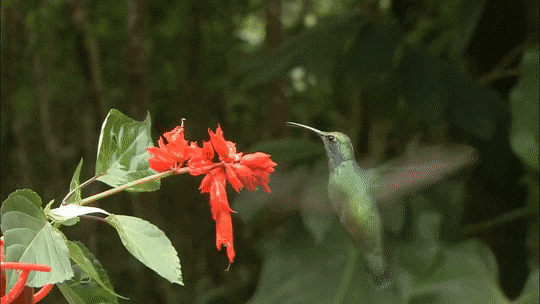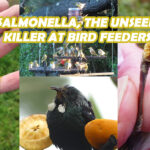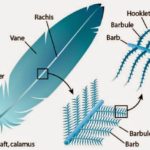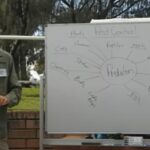Full video here – Hummingbirds: Magic in the Air
Summary:
– The smaller birds on the planet and smallest of all warm-blooded living creatures.
– They live only in the Americas.
– There are about 350 species.
– They can hover so their body seems perfectly balanced while their wings do the work. Moving the wings in a figure 8 means getting elevation while moving them back or forth. This enables them to get the nectar out of flowers. They can even hover upside down.
– The swordbill evolved its beak to go deeper into flowers like the datura. In turn, the swordbill helps the datura pollinate.
– 8000 plant species rely on hummingbirds to pollinate.
– Different hummingbirds and different flowers match each other like a key in a lock.
– The purple throated caribs are a unique species. The carib has a special beak and tongue to get difficult to reach nectar in heliconias.

– Even though they’re built to feed on nectar, they still need protein. This makes them aggressive hunters.
– They can flex their jaws to turn their beaks into a catchers mitt which they use to catch insects.
– They need to consume a lot of food just to make it through one day. Half their body weight in nectar alone means visiting more than a 1000 flowers from dusk to dawn. If they don’t get food they can perish in their sleep.
– Wings beat up to 200 times per second.
– Their heart rate at rest can be up to 600 beats per minute.
– They are territorial and have intense dogfights.
– At night they fluff their feathers and adjust their internal thermostat.
– They go into a state of torpor which is like going into hibernation and their body temperature can drop by more than half. The heart can slow down to as low as 36 beats per minute.
– In the morning their body starts getting back to normal.
– The andean hillstar hopes around to conserve energy. They finds spots where the flowers grow close to the ground.
– When it comes to sex, the females make the rules and the males have to make a good impression. Some males will create a song, others will use their feathers, while others will do a dance.
Creator and Copyright: Andrew A Reding
– Male annas are very flamboyant. Apart from their strong colours, they will do a dive with a chirp to get the females attention. He spreads his wings at the end of the dive which coincides with the chirp which are both just 60 milliseconds. The tail feathers produce the sound.
– Their irredescent feathers can look dull and black in one angle while from another angle you can see their vibrant colours. Special cells in feathers break down light and emit certain wavelengths.
– The mother makes her home and raises her young alone. They use soft bits of leaves and paste them with webs.
– The female usually lays 2 tiny eggs.
– The young live on a diet of regurgetated nectar and insects and grow up quick. The babies are about the weight of a post-it note.
– Black-chinned hummingbirds live near cooper’s hawks because the hawk will keep other predators away and will not bother with preying on the hummingbirds.

– A ruby-throat and rufous hummingbird migrate twice a year. They breed and nest up North in America or Canada and then spending the winter in the tropics of Central America. They can cover up to 6000 miles roundtrip. This goes across the Gulf of Mexico, 18 hours, 500 miles of open water and no place to stop or feed. To survive this ordeal they go on an eating binge and store extra fat.
– Over time they have adapted to all kinds of environments and a key to their survival.
– Even though they have been losing their habitat at alarming speed, they have found homes in various places.
– The spatulatail has a champion in Peru and is working hard on the spatulatail reserve.

Bonus:
– A Rainbow of Light Diffracts Through Hummingbird Wings in Photographs by Christian Spencer




